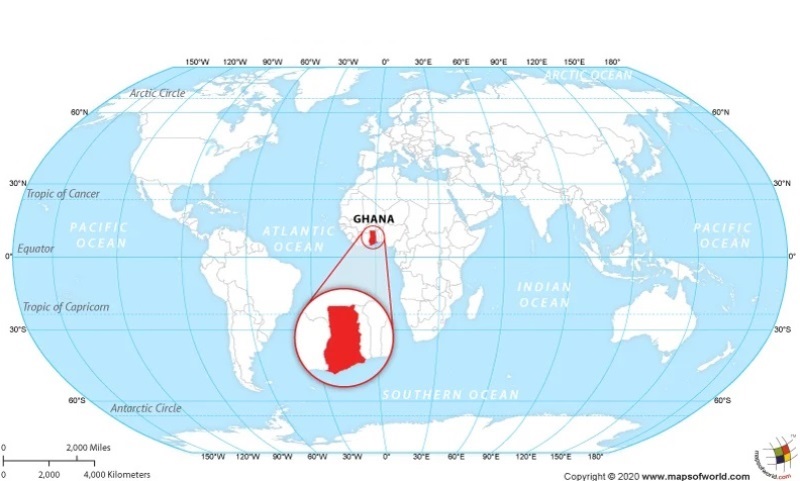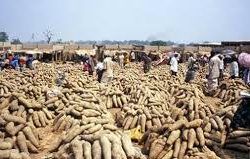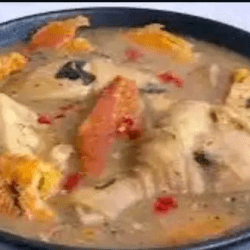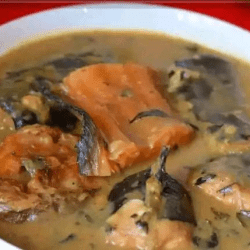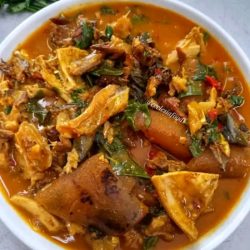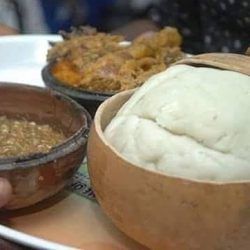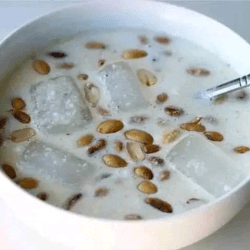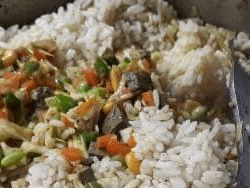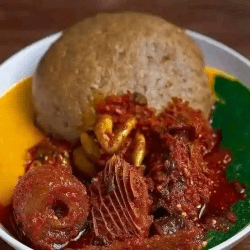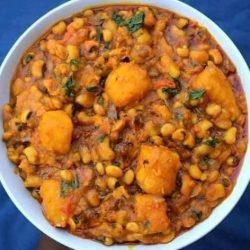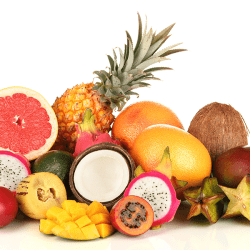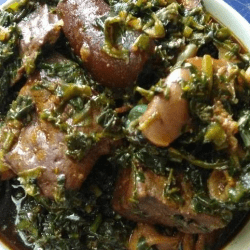Ghana’s basic diet consists of a starchy staple eaten with a soup or stew.
Forest crops, such as plantain, cassava, cocoyam (taro), and tropical yams, predominate in the south.

Corn is significant, especially among Ga, and rice is also popular.
The main dish is fufu, pounded plantain, or tubers in combination with cassava.

Soup ingredients include common vegetables and some animal protein, usually fish, and invariably, hot peppers.
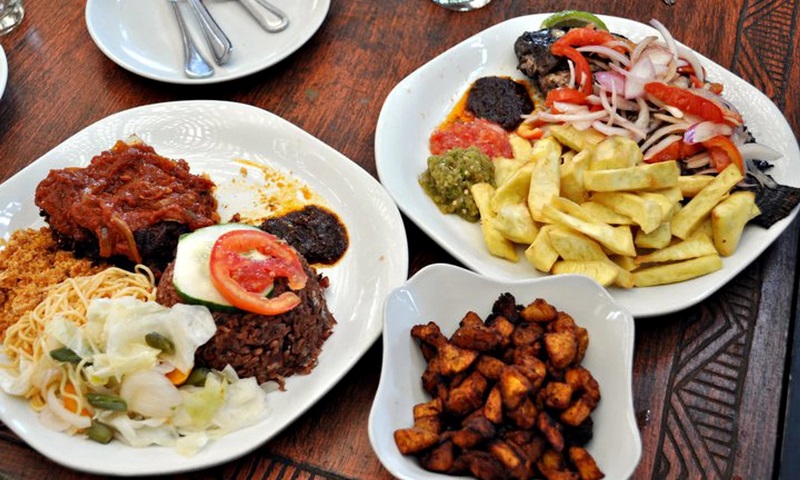
Palm-nut and peanut soups are special favorites.
The main cooking oil is locally produced red palm oil. The northern staple is millet, which is processed into a paste and eaten with a soup as well. Indigenous diets are eaten at all social levels, even by the Westernized elite.

Bread is the only major European introduction and is often eaten at breakfast. Restaurants are not common outside of urban business districts, but most local “chop bars” offer a range of indigenous dishes to workers and bachelors.
People frequently snack on goods offered for sale by street hawkers.

Food and Ceremonies
Among the Akan, the main indigenous celebration is odwira, a harvest rite, in which new yams are presented to the chief and eaten in public and domestic feasts.
Most households raise chickens and dwarf goats, which are reserved for special occasions, such as christenings, weddings, traditional festivals, and Christmas.
The Ga people celebrate homowo, another harvest festival, which is marked by eating kpekpele, made from mashed corn and palm oil.
Popular drinks include palm wine, made from the fermented sap of the oil palm, and home-brewed millet beer. Bottled European-style beer is widely consumed. Imported schnapps and whiskey have important ceremonial uses as libations for royal and family ancestors.
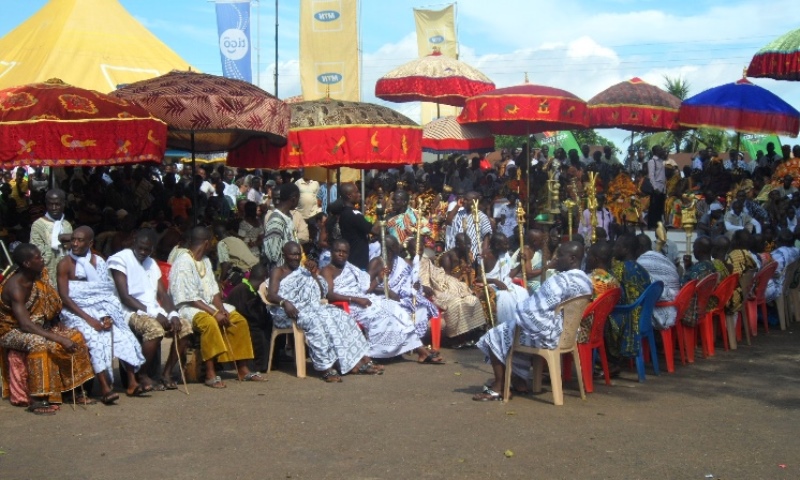
Odwira Festival is celebrated annually in the month of September and October
